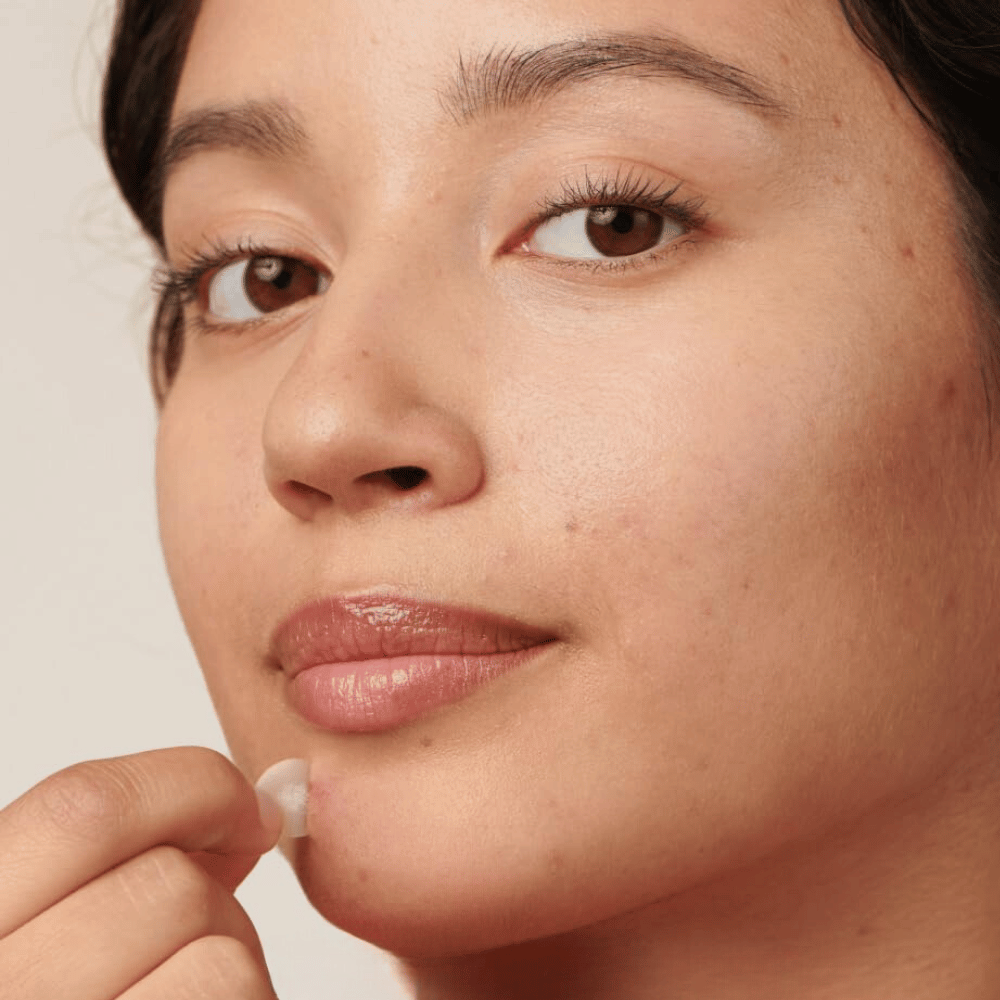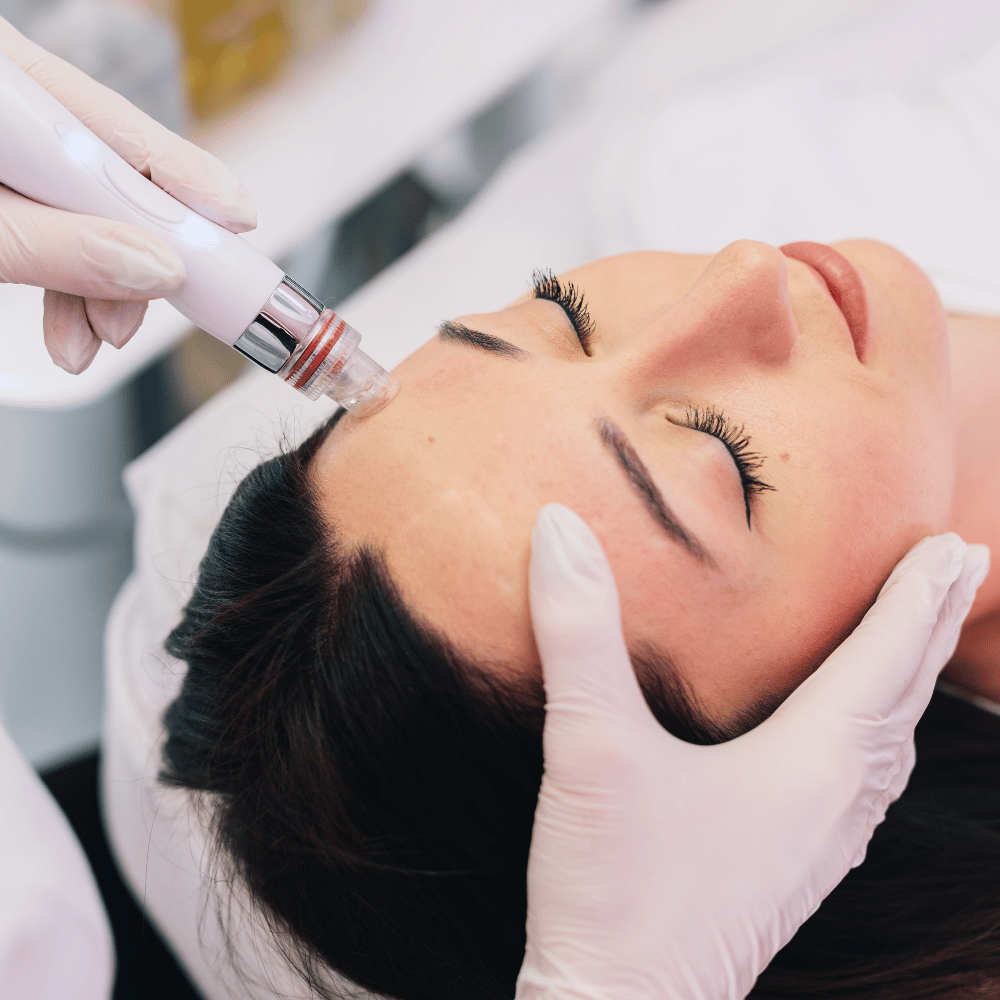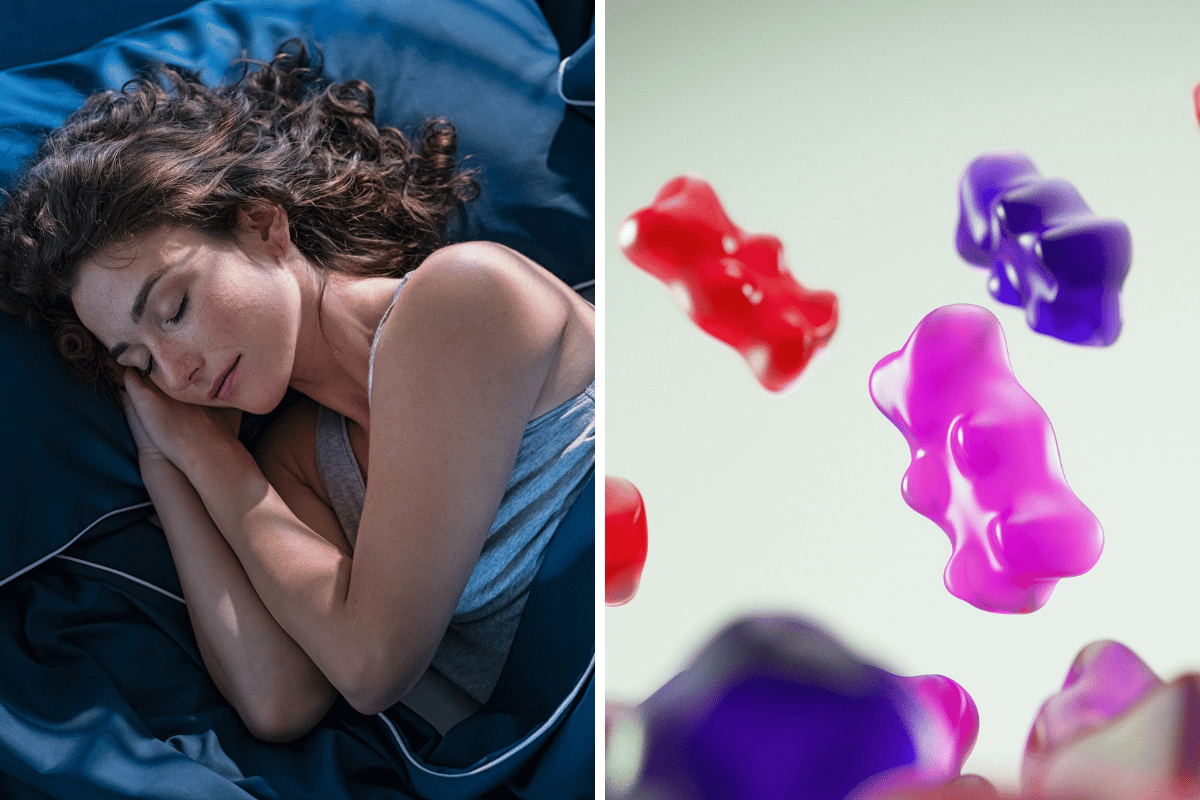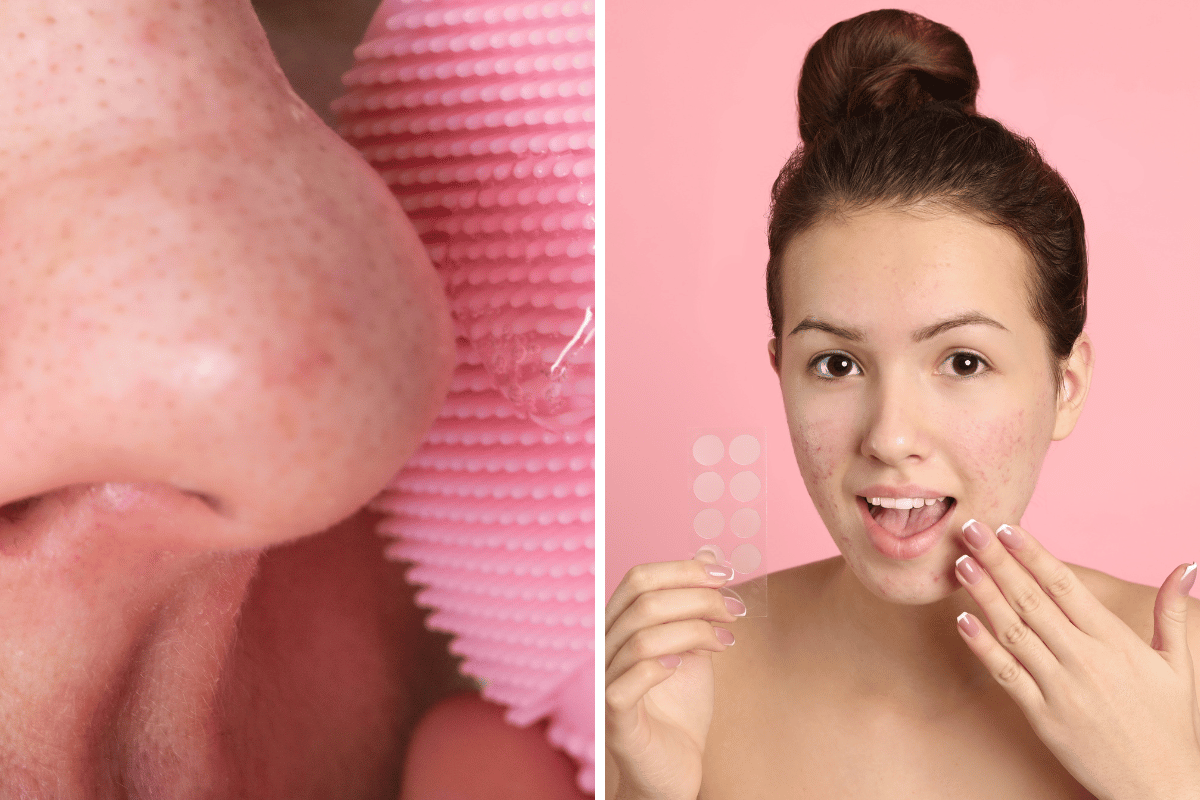Key Takeaways:
- Pimple patches can be an effective spot treatment for mild to moderate acne.
- Dermatologists often recommend patches containing active ingredients like salicylic acid and tea tree oil.
- It's important to choose the right type of patch for your skin concern and follow the instructions for use.
Acne is a common skin concern that affects millions of people worldwide. From teenagers grappling with hormonal changes to adults experiencing stress-induced breakouts, the quest for a clear complexion is universal.
Among the myriad of acne treatments available, pimple patches have emerged as a popular option. But are they recommended by dermatologists? Let's dive into the world of acne and pimple patches recommended by dermatologists to find out.
Understanding Pimple Patches
Pimple patches, also known as acne stickers or acne healing dots, are small adhesive patches that are applied directly to a pimple. Most pimple patches are designed to protect the affected area from bacteria and external irritants while delivering acne-fighting ingredients directly to the skin.
They come in various forms, with some containing active ingredients like hydrocolloid and salicylic acid, while others are simple hydrocolloid patches that primarily aim to absorb excess fluid.

How Pimple Patches Work
The principle behind pimple patches is to create a moist environment that promotes wound healing while protecting the area from further infection. Hydrocolloid gel adheres to the skin, absorbs excess oil, and helps to remove excess sebum.
This can reduce the size of the pimple and speed up the healing process. Some patches also contain ingredients like salicylic acid, which works to unclog pores, and tea tree extract, known for its anti-inflammatory properties.
The Science Behind Acne Patches
Acne patches are not just a fad; there is science to back up their efficacy. Hydrocolloid dressings, originally developed for treating pressure sores and other wounds, have been adapted for acne treatment due to their ability to absorb excess fluid and create a protective barrier.
When it comes to active ingredients, benzoyl peroxide, salicylic acid, and tea tree oil are well-known for their acne-fighting abilities. These ingredients help to treat acne by unclogging pores, decreasing inflammation, and fighting bacteria.
Active Ingredients in Pimple Patches
When selecting a pimple patch, it's crucial to look at the active ingredients. Salicylic acid is a beta hydroxy acid that exfoliates the skin cells and unclogs pores. Benzoyl peroxide kills bacteria and helps to treat pimples.
Tea tree oil and aloe vera leaf extract are known for their soothing and anti-inflammatory properties. Some patches of aloe vera leaf extract also contain hyaluronic acid to improve moisture retention and improve skin tone.
The Role of Hydrocolloid in Pimple Patches
Hydrocolloid is a key component in many pimple patches. It's a substance that forms a gel when it comes into contact with moisture, which allows it to absorb excess oil and pus from a fairly inflamed pimple.
This not only helps to reduce the size of the pimple but also prevents the spread of bacteria. The hydrocolloid also maintains a moist environment that supports the skin's barrier function and promotes healing.

Pimple Patches and Clogged Pores
Have you ever wondered if those tiny, seemingly magical stickers can unclog your pores? Well, let's dive into how pimple patches interact with clogged pores. A hydrocolloid patch is designed to provide a moist environment that helps to heal the skin.
When applied to a blemish, it works by absorbing excess fluid, which includes oil and pus, effectively drawing out impurities from clogged pores. This can be particularly satisfying to witness as the patch turns white from the absorbed gunk, a sign that it's doing its job.
But it's not just about absorption. Many pimple patches are also infused with acne-fighting ingredients that target the bacteria and debris that lead to clogged pores in the first place.
Ingredients like salicylic acid can penetrate the outer layer of the skin to exfoliate and clear out excess sebum and dead skin cells. This dual action of physical absorption and chemical exfoliation can make pimple patches a handy tool for dealing with the occasional pimple that pops up due to clogged pores.
Hydrocolloid Dressing: A Game Changer for Acne Treatment?
Have you ever wondered what makes hydrocolloid dressings so effective for those pesky pimples? Originally used for treating wounds, hydrocolloid dressing has found its way into the acne care arsenal due to its unique properties.
It acts as a protective layer, not only shielding the affected area from bacteria and external irritants but also maintaining a moist environment. This moist environment is key to promoting healing without causing the skin to dry out or scab over, which can lead to scarring. It's like a mini healing chamber, tailored for your pimple.
Moreover, hydrocolloid dressing is adept at absorbing excess fluid, including pus and oil. This is particularly beneficial for those larger, more painful pimples that seem to have a life of their own. By gently drawing out the impurities, the dressing decreases inflammation and speeds up the healing process.
It's a discreet and effective way to manage breakouts, and many users report waking up to significantly reduced blemishes after an overnight application. The dressing's ability to absorb and contain the gunk is a satisfying visual proof of its efficacy.
Pimple Patches vs. Traditional Acne Treatments
Have you ever wondered how pimple patches stack up against traditional acne treatments? It's a common question, especially when considering the anti-inflammatory properties that many acne solutions claim to have. Unlike some spot treatments that can be harsh and irritate the skin, pimple patches offer a gentler approach.
They create a protective seal over the blemish, not only shielding it from external bacteria but also maintaining the skin's barrier function. This is crucial because a strong barrier helps to keep irritants out and moisture in, which can be beneficial for healing.
Moreover, pimple patches often contain ingredients that are known for their anti-inflammatory properties, such as salicylic acid or tea tree oil. These components work in tandem with the occlusive nature of the patch to reduce redness and swelling, often resulting in a quicker resolution of the pimple.
Unlike creams and gels that can spread and affect surrounding skin, patches deliver targeted treatment right where it's needed, minimizing the risk of irritation to sensitive areas. This precision helps maintain the integrity of the skin's barrier function while effectively managing acne.

The Evolution of Pimple Patches in Skincare Regimens
Incorporating pimple patches into skincare regimens has become increasingly popular, and for good reason. They are not just a quick fix for emerging zits; they also play a role in maintaining the skin's barrier function.
This is particularly important for individuals with acne-prone skin, as their barrier is often compromised, making it more susceptible to inflammation and further breakouts. Pimple patches can provide an extra layer of defense, keeping the affected area clean and supported while the healing process takes place.
The evolution of pimple patches has seen the introduction of various types with enhanced anti-inflammatory properties. Some are infused with hyaluronic acid to hydrate the skin, while others contain niacinamide to reduce redness and hyperpigmentation.
This development in pimple patch technology means that they're not only a spot treatment but also a preventative measure that can improve the overall health of the skin.
By incorporating these patches into a regular skincare routine, users can benefit from their protective and restorative qualities, leading to clearer and more resilient skin over time.
The Anti-Inflammatory Powerhouse: How Pimple Patches Support Skin's Barrier Function
When it comes to acne, inflammation is a major culprit. That's where the anti-inflammatory properties of pimple patches come into play. These small, yet mighty patches often contain ingredients that are known for their ability to soothe irritated skin and decrease inflammation.
This not only helps in reducing the size and redness of pimples but also supports the skin's barrier function. A strong skin barrier is essential for keeping out harmful bacteria and pollutants that can exacerbate acne.
Pimple patches can be particularly beneficial for those with sensitive skin, as they create a protective seal that prevents harsh environmental elements and potential irritants from aggravating the skin. This targeted approach to treatment means that the rest of your skin is free from the sometimes drying effects of spot treatments.
By focusing on healing and protecting, pimple patches work to restore the skin's barrier function, ensuring that your skin remains healthy and resilient in the face of acne-inducing challenges.

The Role of Dermatologists in Pimple Patch Development
When it comes to the development of skincare products, the expertise of a board-certified dermatologist is invaluable. These professionals understand the intricacies of the skin's barrier function and the pathophysiology of acne, which is why their input is crucial in creating effective pimple patches.
A New York City dermatologist, for instance, might collaborate with skincare brands to incorporate blemish-busting ingredients that are both effective and safe for all skin types.
Moreover, dermatologists often recommend products like hydrocolloid dressings, which have been used in the medical field for years to treat wounds. These dressings are known for their ability to decrease inflammation and promote healing, thanks to their anti-inflammatory properties.
By adapting the hydrocolloid patch technology into a smaller, more concentrated form, such as acne dots, dermatologists have helped to create a targeted treatment for blind pimples and other forms of acne, ensuring that these patches do more than just cover up a problem—they help to resolve it.
Are Pimple Patches Suitable for Sensitive Skin?
People with sensitive skin often struggle to find acne treatments that don't irritate sensitive skin. Pimple patches can be a gentle alternative to more aggressive spot treatments.
Since they don't spread onto the surrounding skin, they minimize the risk of irritation. However, it's still important to choose patches that are free from potential irritants and to follow the usage instructions carefully.
The Effectiveness of Pimple Patches for Different Types of Acne
Pimple patches are generally most effective on pimples with a visible white head. They are less effective on cystic acne, which occurs deeper in the skin. For inflamed breakouts or occasional pimples, patches can provide a targeted treatment that reduces the pimple or visible whitehead's size and redness.
For hormonal acne or more severe cases, it's best to consult with a board-certified dermatologist for a comprehensive acne treatment plan.

Choosing the Best Pimple Patches
With so many options on the market, choosing the best pimple patches can be overwhelming. Look for products from reputable brands like Hero Cosmetics' Mighty Patch or COSRX patches, which have garnered positive reviews for their effectiveness. ZitSticka patches are another option that combines microdart technology with blemish-busting ingredients to fight acne. 👇
How to Use Pimple Patches Correctly
For pimple patches to work effectively, they must be used correctly. Start with clean, dry skin before applying the patch. Press it firmly onto the pimple and leave it on for the recommended amount of time, usually several hours or overnight. Avoid using other acne medications or treatments on the same area to prevent interactions and skin irritation.
When to See a Dermatologist
While pimple patches can be a convenient over-the-counter solution for mild breakouts, they are not a cure-all. If you're experiencing persistent acne, worsening symptoms, or if your acne is leaving scars, it's important to seek the advice of a board-certified dermatologist. They can provide a personalized treatment plan that may include prescription acne medications or other therapies.
SwagScale Summary
Pimple patches have gained the endorsement of many dermatologists as a viable treatment option for certain types of acne. They offer a targeted approach to treating pimples by providing a protective barrier and delivering acne-fighting ingredients directly to the affected area.
While they are particularly effective for mild to moderate acne with visible whiteheads, they may not be suitable for more severe forms of acne like cystic acne. It's essential to select the right type of patch for your specific skin concern and to use them as directed for the best results.
Your Pimple Patch Guru,
Kim
FAQ Section
Can pimple patches make acne worse?
Pimple patches are generally safe and should not make acne worse if used correctly. However, if you have an allergic reaction to any of the ingredients or if you use them on the wrong type of acne (like cystic acne), they may not be effective and could potentially aggravate your skin.
How long should I leave a pimple patch on?
Most pimple patches should be left on for several hours or overnight. It's important to follow the instructions on the packaging for the best results. Some best pimple patches will turn opaque or change in appearance to indicate that they have absorbed pus and oil and should be removed.
Are pimple patches a replacement for traditional acne treatments?
Pimple patches are not a replacement for a comprehensive acne treatment regimen, especially for moderate to severe acne.
They are best used as a spot treatment for mild breakouts or individual pimples. For more persistent acne, consult a dermatologist for a tailored treatment plan that may include other acne medications and therapies.









